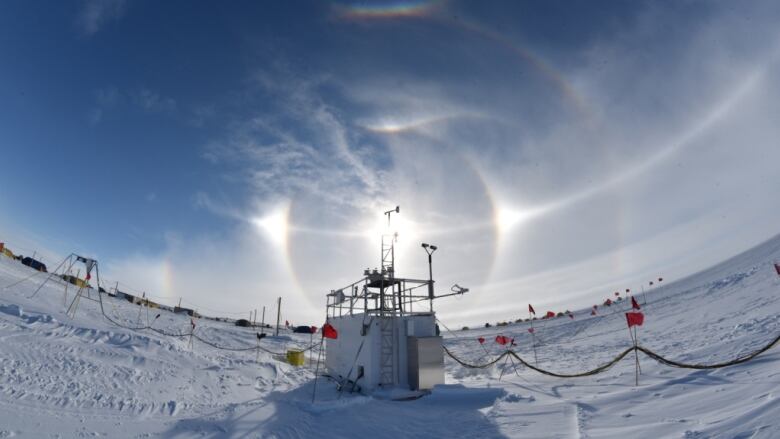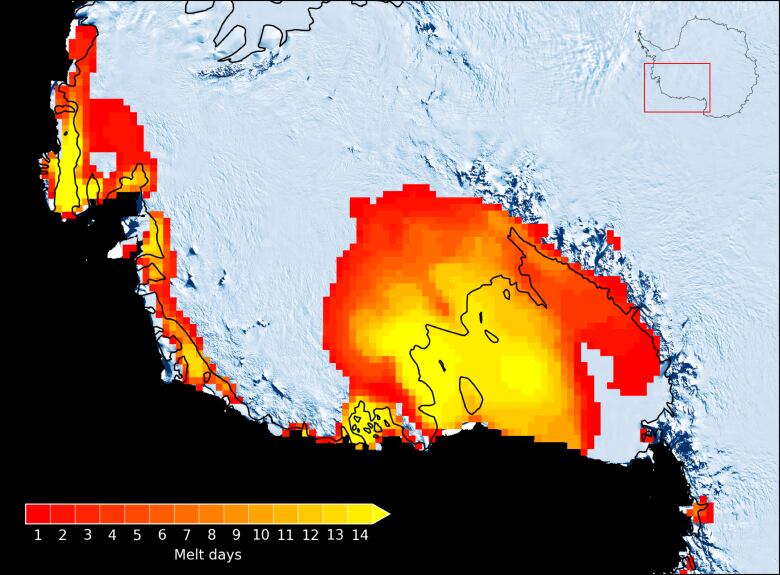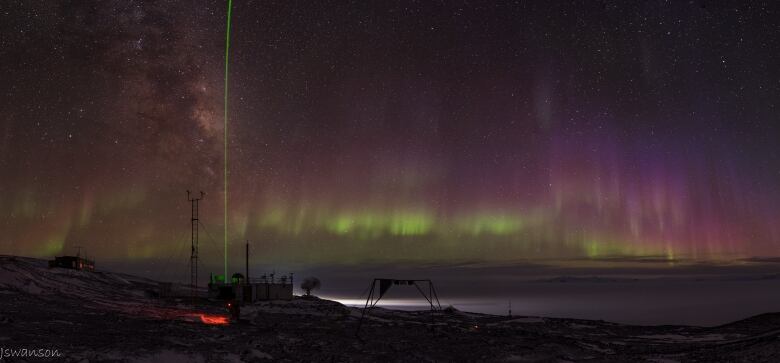Antarctic ice melt tied to El Nino warming
Melting of West Antarctic Ice Sheet could become a major contributor to rising sea levels around the globe

You may credit the El Ninoweather phenomenon with an easier time keeping up with snow shovelling, and fewer days sporting aparkaover the winter.
But researchers from Ohio State University have linked the warm weather eventwith something that casts thosemilder daysin a different light a massive surface melt on the West Antarctic Ice Sheet in late 2015 and early 2016.
Their findings raisealarm bells about the stability of the ice shelf and what further melting tied to climate change could mean for rising sea levels around the globe.
"The projections are that these El Ninos will come more often in the future,and we're likely to see much more frequent melting over critical ice shelves," said David Bromwich, a professor of geology at Ohio State, whoco-authored a study ledbyJulienNicolas.
The studyappeared in the June 15 issue of the journalNature Communications.
- Arctic sea ice may vanish even if world achieves climate goal, study says
- VIDEO: Large iceberg poised to break off Antarctic ice shelf
The Ohio State experts are part of a team contributing to a larger research effort known as AWARE, which stands for ARM West Antarctic Radiation Experiment. It's headquartered out of the Scripps Institution of Oceanography at the University of California San Diego.
AWARE scientists based atMcMurdoStation, the main U.S. research facility in Antarctica, were conducting the first comprehensive atmosphere measurements in the region since the 1960s.
A plannedfield experimentin the works for 18 months saw a small team camping out in the middle of theice sheet for a months and a half with sophisticated instrumentation for measuring atmospheric conditions.
They had temperatures right about zero Celcius really unusual.For that place it was a heat wave,- David Bromwich, geology professor, Ohio State University
In a scientific stroke of luck, that team'souting to the field site 1,800 metresabove sea level coincided with one of the largest El Ninoevents of the past 50 years.
PhD candidate Ryan Scott from Scripps was one of the scientists in the field when this occurred.
"Most of the time while I was at camp, of course it was very cold and the air is very dry," said Scott. "About two or three weeks in we got a really rapid change of temperature. It went from -20 C to closer to 0 C. It also started to drizzle a little bit, which is pretty much unprecedented.
"We got extremely lucky having our instruments in the right place at the right time," he said.
In January 2016, word of these unusually warm and moist conditions came to the Ohio State scientists.
"For that place it was a heat wave," saidBromwich. "We thought, let's see if we can look at what's going on over a bigger area."

"If it starts to melt, the emission in the microwave go up dramatically. It's very easy to spot when melting is going on," said Bromwich.
They saw "ahuge melt event" that lasted 16 days and covered 900,000 square kilometres.
What it means
The West Antarctic ice sheet is thought to be unstable,and many glaciologists believe that it is already slowly disintegrating, said Bromwich.
If it completely melted into the ocean, it could add about 3.4 metresof sea level worldwide.
"Sea level rise is a big deal. And even though we're [studying] in remote parts of the world, the effect is felt pretty much globally.There aremany, many cities right at sea level," he said, pointing to major port cities like New York, Miami, and in Canada, Vancouver and Halifax, as examples.

To put an 3.4 metres of sea level rise into context, said Bromwich, the damage from Hurricane Sandy was caused by the sea level rising about 30 centimetreswhen it came ashore in New Jersey.
He said he hopes this kind of information will be considered in context of policies around climate change.
"As scientists we want to provide information about what's happening to theworld, what might happen. And then I think it's up to the political force, politicians and voters, to decide whether they want to make changes. I hope they will.
"There's a lot of unexpected impacts of continuing our present course of action with the burning of these fossil fuels.












_(720p).jpg)


 OFFICIAL HD MUSIC VIDEO.jpg)
.jpg)



























































































